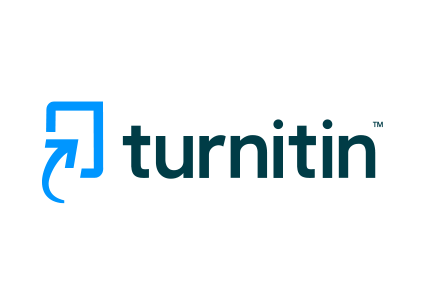TRANSFORMASI DIGITAL DALAM PELAYANAN PUBLIK: IMPLIKASI DAN TANTANGAN HUKUM ADMINISTRASI NEGARA
Keywords:
Digital Transformation, Public Services, Implications, State Administrative Law ChallengesAbstract
Digital transformation in public services offers increased efficiency, transparency, and accessibility, but also presents significant challenges in the context of State Administrative Law. These challenges include regulatory adjustments to new technologies, uneven digital infrastructure, cybersecurity issues, and changes in organisational culture in government agencies. In addition, the issue of interoperability between government agency systems and the financing required for digital technologies is also a major concern. The protection of personal data and upholding the principle of good governance are important aspects that must be maintained in the digital administration process. With effective collaboration between the government, the private sector, and the community, it is hoped that these challenges can be overcome, so that digital transformation can provide optimal benefits for public services.
Downloads
References
Afiyanti, Y. (2008). Focus Group Discussion (Diskusi Kelompok Terfokus) sebagai Metode Pengumpulan Data Penelitian Kualitatif. Jurnal Keperawatan Indonesia, 12(1), 58–62. https://doi.org/10.7454/jki.v12i1.201
Anthopoulos, L. G., & Reddick, C. G. (2016). Understanding electronic government research and smart city: A framework and empirical evidence. Information Polity, 21(1), 99–117.
Bannister, F., & Connolly, R. (2011). The Trouble with Transparency: A Critical Review of Openness in e-Government. Policy & Internet, 3(1), 1–30.
Bellamy, C., & Taylor, J. A. (1998). Governing in the Information Age. Open University Press.
Bertot, J. C., Jaeger, P. T., & Grimes, J. M. (2012). Promoting transparency and accountability through ICTs, social media, and collaborative e-government. Transforming Government: People, Process and Policy, 6(1), 78–91.
Busch, P. A., & Henriksen, H. Z. (2018). Digital transformation in public sector organizations: Identifying critical success factors. Transforming Government: People, Process and Policy, 12(1), 52–75.
Castelnovo, W. (2013). Public value evaluation of e-government policies. The Electronic Journal of Information Systems Evaluation, 16(11), 202–213.
Criado, J. I., Sandoval-Almazan, R., & Gil-Garcia, J. R. (2013). Government innovation through social media. Government Information Quarterly, 30(4), 319–326.
Dunleavy, P., Margetts, H., Bastow, S., & Tinkler, J. (2006). Digital Era Governance: IT Corporations, the State, and e-Government. Oxford University Press.
Firman, F.-. (2018). PENELITIAN KUALITATIF DAN KUANTITATIF. Query date: 2024-05-25 20:59:55. https://doi.org/10.31227/osf.io/4nq5e
Gil-Garcia, J. R., & Helbig, N. (2006). Exploring e-government benefits and success factors. Journal of Public Administration Research and Theory, 16(3), 377–394.
Grass, G. (2012). ICTs as transformative tools in governance: The deployment of e-Governance in India. Journal of Democracy, 23(1), 58–67.
Janssen, M., & Estevez, E. (2013). Lean government and platform-based governance: Doing more with less. Government Information Quarterly, 30(S1), S1–S8.
Klaus, T., & Changchit, C. (2019). Usability and success factors of government websites: A user’s perspective. Journal of Electronic Commerce in Organizations, 17(3), 29–46.
Kuk, G., & Davies, T. (2011). The roles of agency and artifacts in assembling open data complementarities. Journal of the Association for Information Systems, 12(11), 1–24.
Lee, G., & Rao, H. R. (2012). Task complexity and different decision criteria for online service acceptance: A comparison of two e-government compliance service domains. Government Information Quarterly, 29(3), 434–443.
Luna-Reyes, L. F., & Gil-Garcia, J. R. (2014). Digital government transformation and internet portals: The co-evolution of technology, organizations, and institutions. Government Information Quarterly, 31(4), 545–553.
Mahmood, Z. (2013). E-Government in developing countries: Key challenges and future. Internet E-Governance, 6(2), 44–58.
Meijer, A. (2011). E-Governance innovations in the Netherlands. Public Management Review, 13(2), 187–199.
Norris, D. F. (2010). E-government...Not e-governance...Not e-democracy Not Now! Public Administration Review, 70(2), S164–S176.
Nurdiana, I. (2020). Perbedaan Penelitian Kuantitatif Dan Kualitatif. Query date: 2024-05-25 20:59:55. https://doi.org/10.31219/osf.io/t2d7x
Osborne, S. P. (2010). The New Public Governance?: Emerging Perspectives on the Theory and Practice of Public Governance. Routledge.
Pina, V., Torres, L., & Royo, S. (2010). Is e-Government leading to more accountable and transparent local governments? Public Administration, 88(1), 446–471.
Pollitt, C. (2011). Moderation in all things: International comparisons of governance quality. Financial Accountability and Management, 27(4), 409–424.
Reddick, C. G., & Anthopoulos, L. G. (2014). Interactions with e-government, new digital media, and traditional channel choices: Citizen-initiated factors. Transforming Government: People, Process and Policy, 8(3), 398–419.
Tapscott, D. (1996). The Digital Economy: Promise and Peril in the Age of Networked Intelligence. McGraw-Hill.
Yang, J., & Rho, S. Y. (2007). E-government for better performance: Promises, impact, and challenges. International Review of Administrative Sciences, 73(1), 120–129.









